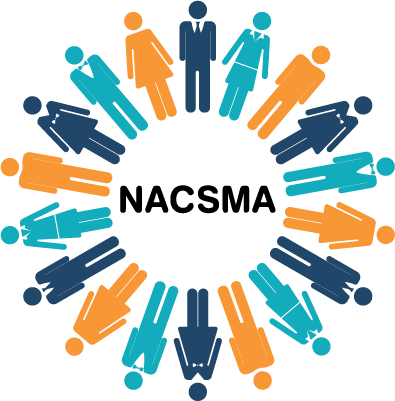LEADERSHIP KPI’s
Leadership KPI’s
Developing an understanding of contact center key performance indicators (KPIs) is mandatory to driving the business.
Knowing how to identify KPIs to measure performance as well as how to interpret and act on the data is essential to successfully managing the contact center. Comprehensive reports including real-time and historical reports provides the manager with insights to where additional coaching and training maybe needed, where process can potentially improve, as well as policy and procedures that can be tweaked to operate a well-oiled customer service machine. The successful manager makes real-time business decisions backed by solid data.
Customer Satisfaction and KPI’s
– First Call Resolution – the percentage of calls that the agent resolves without transferring the call, or having to return the call or escalate the call to a manager. Agents who escalate and/or transfer calls a high percentage of the time indicate their inability to answer and resolve the caller’s issues. These agents need further training and coaching. Drill down to identify what kinds of issues the agent is unable to resolve.
– Percentage of Calls Blocked – how many callers get a busy signal and can’t get through to an agent. This is usually due to older technology, like PBXs since they have a certain number of ports, which limits the number of calls that can simultaneously come into the contact center. The busy signal is frustrating to callers and results in lost business.
– Average Time in the Queue – the amount of time the caller must wait before an agent picks up. Today enterprise contact center software has built-in to the platform auto-call back features. Callers can opt for a call back without losing their place in line. If you find average time in the queue increasingly high, consider Auto-Callback. Customers love this feature.
– Service Level – the percentage of calls answered within a specified number of seconds. This is an interesting conversation because most measure service level from the time the call is queued to the time an agent picks up. What about the time it takes for the caller to get into the queue? Does your IVR have an irritating forced message on the front-end slowing down the caller’s ability to get into a queue? Do you think they want hear about your latest commercial? The industry average for contact center service levels is 85/20, 85% of the calls are answered within 20 seconds or 80/30, 80% of the calls are answered within 30 seconds. What can you do to shorten the front-end time?
– Average Abandonment Rate – the percentage of callers who hang up before reaching an agent. Basically these callers are tired of waiting, the Auto-Call Back feature is one solution, adding more agents or providing a self-service IVR solution will reduce a center’s abandonment rate.
– Average Speed of Answer – the average amount of time it takes for the call to be answered by an agent or the Automatic Call Distributor (ACD). This relates to the SLA compared to your industry.
– Average Handle Time – the average amount of time the agent spends talking with callers, this includes hold times. Long calls are always a manager’s concern especially when the agent has lots of “long” calls. Drilling down deeper to find out what the agent is doing and not doing is critical to identifying the real issue. Perhaps have the manager monitor the calls to get a sense of why the agent is talking too long. A long handle time doesn’t necessarily mean the agent is struggling; some are just too chatty.
– Schedule Adherence – this measures the agent’s compliance with the schedule. Are the agents sticking to the assigned schedule? Staffing the contact center is the single biggest expense and every minute counts when it comes to meeting service levels. Schedule adherence is critical for ensuring smooth transitions between shifts. Agents don’t understand the big picture and that being late 10 minutes impacts the entire contact center. Take the time to inform and educate agents on the importance of schedule adherence, continue to measure and manage it utilizing a workforce management tool. The more schedules, shifts, and agents, the more complex it gets to manage. Successful managers reward agents with incentives and tie schedule adherence to bonuses for good scores. Can your agents achieve 95% or better?

Manager’s Toolbox
An important step in optimizing your Leadership KPI’s is having the proper “Manager’s Toolbox”. You must include the right tools; managing a contact center is a different set of tools than managing a production line.
Does your contact center software provide the real-time and historical data you need to call the shots intelligently? Too many contact center managers are frustrated with the lack of data due to an old antiquated phone system or find the data is limited because the contact center phone system is really an office phone system.
Here are some tools you should have in your toolbox:
– Contact Center software with integrated reporting. Every activity in the contact center is documented, stored and retrievable. Integrated with Workforce Management, payroll applications and CRMs for comprehensive data mining. This gives managers the data they need when they need it.
– Real-Time Metrics Dashboard for Agents and Supervisors – Agents want to see how they are doing in real-time like managers who want to see how many callers are in the queue, wait times, average abandonments etc.
– The Manager’s Dashboard should include data that allows them to make split second decisions that impact business in real-time. These can be company/industry specific. Some examples are service levels, number of calls in the queue for all teams, longest wait times, etc.
– A best-in-class contact center platform allows managers to monitor calls, listen to live calls, listen silently, turn the call into a three-way call or just listen and coach the agent through the “CHAT” feature. Managers can also retrieve recorded calls for coaching and training.
– Managers need historical data as well as real-time data. Managers want to look at the data over time; week over week, month over month even year over year. Hosted contact center software that tracks every activity can store data and make it easily accessible when managers need it.
– Integrating Workforce Management software gives managers that extra data like schedule adherence, absenteeism, and agent attrition.
Having the tools to capture and display the data in both real-time and in historical reports provides you, the manager with the intelligence you need to make smart decisions. You don’t have to fly by the seat of your pants anymore!

Customer Satisfaction and KPI’s
– First Call Resolution – the percentage of calls that the agent resolves without transferring the call, or having to return the call or escalate the call to a manager. Agents who escalate and/or transfer calls a high percentage of the time indicate their inability to answer and resolve the caller’s issues. These agents need further training and coaching. Drill down to identify what kinds of issues the agent is unable to resolve.
– Percentage of Calls Blocked – how many callers get a busy signal and can’t get through to an agent. This is usually due to older technology, like PBXs since they have a certain number of ports, which limits the number of calls that can simultaneously come into the contact center. The busy signal is frustrating to callers and results in lost business.
– Average Time in the Queue – the amount of time the caller must wait before an agent picks up. Today enterprise contact center software has built-in to the platform auto-call back features. Callers can opt for a call back without losing their place in line. If you find average time in the queue increasingly high, consider Auto-Callback. Customers love this feature.
– Service Level – the percentage of calls answered within a specified number of seconds. This is an interesting conversation because most measure service level from the time the call is queued to the time an agent picks up. What about the time it takes for the caller to get into the queue? Does your IVR have an irritating forced message on the front-end slowing down the caller’s ability to get into a queue? Do you think they want hear about your latest commercial? The industry average for contact center service levels is 85/20, 85% of the calls are answered within 20 seconds or 80/30, 80% of the calls are answered within 30 seconds. What can you do to shorten the front-end time?
– Average Abandonment Rate – the percentage of callers who hang up before reaching an agent. Basically these callers are tired of waiting, the Auto-Call Back feature is one solution, adding more agents or providing a self-service IVR solution will reduce a center’s abandonment rate.
– Average Speed of Answer – the average amount of time it takes for the call to be answered by an agent or the Automatic Call Distributor (ACD). This relates to the SLA compared to your industry.
– Average Handle Time – the average amount of time the agent spends talking with callers, this includes hold times. Long calls are always a manager’s concern especially when the agent has lots of “long” calls. Drilling down deeper to find out what the agent is doing and not doing is critical to identifying the real issue. Perhaps have the manager monitor the calls to get a sense of why the agent is talking too long. A long handle time doesn’t necessarily mean the agent is struggling; some are just too chatty.
– Schedule Adherence – this measures the agent’s compliance with the schedule. Are the agents sticking to the assigned schedule? Staffing the contact center is the single biggest expense and every minute counts when it comes to meeting service levels. Schedule adherence is critical for ensuring smooth transitions between shifts. Agents don’t understand the big picture and that being late 10 minutes impacts the entire contact center. Take the time to inform and educate agents on the importance of schedule adherence, continue to measure and manage it utilizing a workforce management tool. The more schedules, shifts, and agents, the more complex it gets to manage. Successful managers reward agents with incentives and tie schedule adherence to bonuses for good scores. Can your agents achieve 95% or better?
INDUSTRY SERVICE TIPS
1. Keep it simple. No need to get tangled up in every single metric every single day. Choose your top four KPI’s that drive your business.
2. Show them how to kick butt! Agents want to kick butt and succeed. It’s on the manager to show them how not just tell agents to kick butt.
NEXT STEPS
Contact center leaders have a plethora of data coming into the contact center. The trick is to have a hosted contact center platform that has the ability to capture all the activity that goes on in a contact center, store it in a safe place and then make it easily retrievable for managers to obtain data from yesterday, last week, last month and even last year! Too many contact center managers are managing without any data because they have either an old antiquated phone system or are trying to run a contact center on an office center system that is limited in its ability to capture data. Data is King; capture it so managers can make real-time real-life business decisions.
Coaching for Performance
Coaching for performance is the opportunity to help agents fine-tune their performance.
This is when managers objectively assess elements of a customer contact and calibrate for consistency. Calibrate is the key word; customers want consistency when they call and getting agents on the same message, process and attitude is what calibration is about.
Coaching conversations are typically confidential with agents and are usually scheduled weekly or monthly. Coaching conversations can also be spontaneous when an occurrence happens that needs to be addressed immediately and you may not want to wait until a scheduled coaching meeting. In this meeting you want to provide the data for the basis of your coaching so it doesn’t become a “you don’t like me” conversation but a “here is your data and here is the data of your peers, this is what we expect” conversation. Then you can talk about “how we can get you up to the company expectation.” Listen to the agent’s calls, as well as your top performing agents, as examples of what you expect.
When agents have access in real-time to their metrics they usually know where they have fallen short. They are driven to achieve and when they see the numbers that don’t lie; they can use the data to adjust their performance. It is also powerful to give access to recorded calls, as many times agents know they messed up but want to go back and hear the call for themselves for future improvement. Many times agents are harder on themselves and save the manager from having to assess and correct.
Using the data to coach for performance makes the coaching meeting more productive and more objective. The feedback is based on data and when you share the data with agents they too become metric focused.

So Many KPI’s – Which Ones Do I Use?
Not all contact centers use the same KPI’s; it really depends on what drives your business.
An online shoe retailer values making the emotional connection with the customer and to make that happen it means talking to customers. Not just taking their shoe order, they mean talk. While they track average call times per agent the goal isn’t to reduce this average. This retailer looks at the percentage of time an agent spends on the phone. They re-labeled this metric to “personal service level”. The agent is expected to spend 80% of the time in customer-facing interactions. This 80% can be one call or many. So what is driving your business?
VIDEO FROM OUR EXPERTS



INDUSTRY EXPERTS

Company 1

Company 2

Company 3
NETWORKING FOR CONTACT CENTER PROFESSIONALS
ABOUT NACSMA
NACSMA brings together like-minded professionals focused on advancing the customer contact industry and creating career growth.
BEST-IN-CLASS
Management of a best-in-class contact center sites require the continuous review of Agent Sourcing Models, Organizational Training and Management Development Programs.
NACSMA MEMBERSHIP
NACSMA is a professional, non-profit association whose members represent customer contact organizations and the vendors who support them.
IMPLEMENTATION
When a contact center organization expands to an additional site or requires new space, the steps to properly implement are unique to each organization but do have standard phases.
